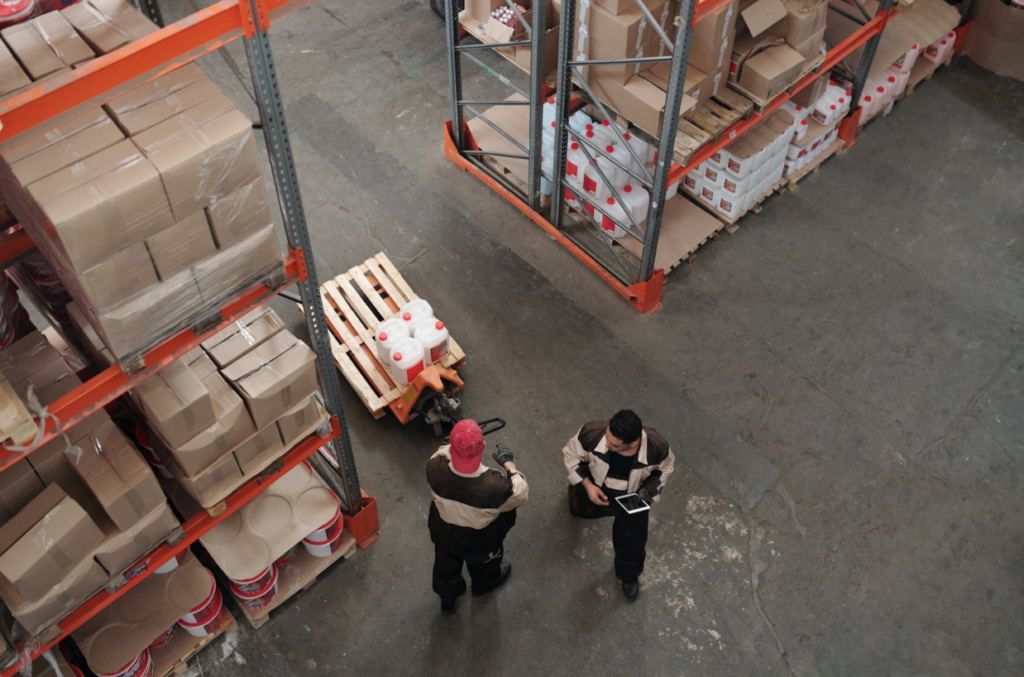3 Secrets to Building a Lucrative Building Materials Business from Scratch
With Alison Raes, https://www.linkedin.com/in/alison-raes-2a926654/
Alison and Matt Raes, of ILA Marketing, have built a thriving sales and marketing business in the building materials industry for the past 23 years.
In today’s episode, they reveal the top 3 secrets to success beyond their wildest dreams, despite recessions, being in Canada promoting non-Canadian products, raising kids while being busy entrepreneurs and so much more.
Full Interview Transcript

Alt Text: A silhouette of three construction workers standing on a rooftop.
This week, Tim and Carolina are joined by Matt and Alison Raes from ILA Marketing Group, a firm representing international building products in Canada, to discuss industry secrets on how to build a building materials business from scratch.
More About the Show
The Build Perspectives podcast shares insider knowledge to build connections and community in the building materials industry. Tim and Carolina are friends, colleagues and former coworkers who love the construction industry and their clients, and they want to share their passion and insights to attract future talent to the industry.
In this episode, Tim and Carolina talk with Alison and Matt about the building industry in Canada, how the supply chain is evolving and how to develop your strengths to catapult success.
About Alison and Matt
Alison started ILA Marketing Group 23 years ago after getting involved in the building materials industry right out of high school. After they got married, Matt joined Alison at ILA to help the company as they expanded their family, and he used his background in building and development to evolve the company. What started out as a temporary solution has now resulted in Matt being a critical part of the ILA team for 12 years and counting!
The Changing Landscape of Inventory

Alt Text: Two people are in a warehouse and are checking inventory. One person is holding an electronic tablet.
Alison explains how Canada’s building materials industry is incredibly healthy post-Covid, maybe even too healthy. In contrast to people who are still feeling the effects of layoffs and furloughs, those in the building materials industry are busier than ever. While Alison considers herself and the company fortunate to be booming in a time that is difficult for so many people, the growth of the industry does not come without some effects.
Alison mentions that the top complaint in the industry is the unprecedented price jumps with no time to react. This ties into availability — distributors and retailers cannot keep materials in stock due to the demand. In addition, contractors are not able to complete builds due to the material shortage.
Tim asks what changes Matt and Alison have noticed as a result of the materials shortage. Matt mentions the importance of planning out builds and being strategic with restocking inventory. The classic “just-in-time” inventory model is not working for contractors in today’s market — being proactive is key to ensuring people get the supplies they need.
Managing inventory has become a more aggressive facet of the building industry. In the past, inventory was one of the greatest places to increase profitability, but now having greater inventory is crucial to completing builds and retaining business. Contractors are responding to the market shifts by implementing more aggressive point-of-sale systems, managing human resources more acutely and raising the prices of their services.
However, Matt sees distributors wanting to revert to the just-in-time model in order to maintain profitability, foreshadowing that it will be re-adopted once this inventory shortage works itself out.
Canada’s Building Materials Industry
Tim reflects on how the building industry in the U.S. and Canada have notably different cultures. Alison has noticed two major differences in the cultures within the industry. The first difference is that the consumer voluntarily drives change in the U.S. while architects, developers and builders are the progressives in the Canadian industry. Consumers in Canada are responding to the innovation relating to environmental code, energy-saving design and the progressive building envelope.
The second difference Alison noticed was the selling experience in Canada differs greatly from the United States. Alison says that helping has been the new selling in Canada for a long time. Developing relationships by consistently helping people troubleshoot issues in the small market is a more successful marketing technique than traditional marketing.
Tim experienced this firsthand when working with Nichiha in Canada — he realized that his leveraged position of power was not effective in the Canadian market as it was in the United States. Discovering this difference helped him ultimately think more about the end-use of the product and how he could be more helpful to customers.
Who ILA Represents
Matt and Alison work with a distribution partner in Canada that generates leads for ILA Marketing Group. Alison and Matt are able to build relationships with these leads after analyzing their product lines, existing relationships, strengths and weaknesses. ILA Marketing is unique in its narrow approach that brings value to its customers through its technicality and expertise.
ILA dedicates time to understand what their customers need and what their problems are because they want to bring solutions to the end-user that will alleviate their pain points. While many firms represent up to fifteen different product lines, ILA focuses on five to six. Matt and Alison are in the business of helping others grow, not just to grow ILA.
Matt and Alison transitioned into launching their own product line after one of their manufacturers decided to discontinue eight key products that were major players in the cohesiveness of ILA’s product repertoire. ILA acquired three construction-oriented adhesives: Lumber Lock, DSA20 and DSA40, to ensure that their users that had grown to trust and rely on these products could continue to be profitable. Becoming producers of a product and running Katabatic Manufacturing has increased Matt and Alison’s ability to be in tune with contractors’ needs.
Adopting this adhesive line has quickly become one of ILA’s most exciting projects. Matt and Alison have been able to learn more about their customer and become more hands-on with strategies like commission, finance, packaging, palletizing and logistics.
Capitalizing on Your Strengths
During their 23 years in the industry, Matt and Alison have learned that focusing on building their strengths rather than fixing their weaknesses has catapulted their success. This translates into the growth of their business by hiring experts to fill the gaps where their weaknesses lie.
Alison encourages supply chain partners to know what they do well and get exceptionally good at it. There are so many great opportunities in the industry, and the industry is only getting bigger.
Tim adds the point that we tend to be hypercritical of ourselves and others, and this leads to comparison. When you see other people’s successes because they are living in their strengths, you try to emulate them — Carolina emphasizes that emulating others is not building your business because their strengths are not your strengths.
There is only one you — if you work from your strengths and not from your weaknesses, you will be successful and happier. This also resonates throughout a company culture from leaders down. Companies that encourage people to think outside of the box and push boundaries can oftentimes land on success because safe doesn’t always win.
Show Notes:
